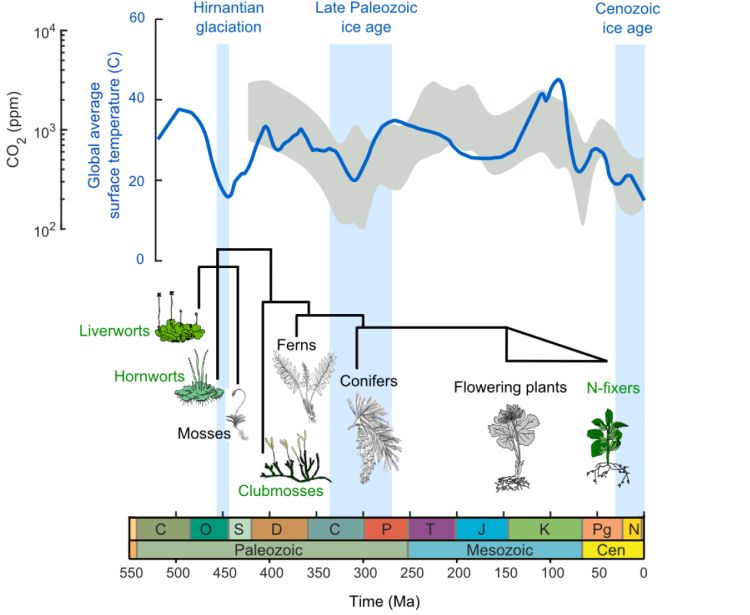Research project
PlantFun: How did the evolution of plants, microbial symbionts and terrestrial nutrient cycles change Earth's long-term climate?
- Start date: 1 June 2019
- End date: 31 May 2022
- Funder: NERC
- Primary investigator: Professor Benjamin J. W. Mills
Earth’s climate has undergone a series of dramatic changes over the Phanerozoic Eon (the last ~540 Million years), but the degree to which these changes were driven by the evolution of terrestrial plants and their microbial symbionts, as opposed to abiotic tectonic processes, remains unclear. We propose to combine targeted plant growth experiments and a new kind of fast spatial Earth system model to test the hypothesis that the evolving terrestrial biosphere and its effects on carbon and nutrient cycling was a major contributor to climate change over the Phanerozoic Eon.
We combine expertise across biogeochemistry, plant-symbiont physiology and computing to perform experiments that will inform our model of long-term terrestrial carbon and nutrient cycling. This will be the first continuous model of terrestrial biological processes over geological time and will allow us to directly test competing hypotheses regarding Earth’s floral and climatic history, providing new insights into the role of life in shaping climate.


